Mastering Ant Bait: Essential Strategies for Control
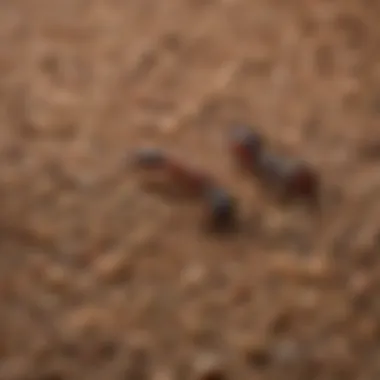
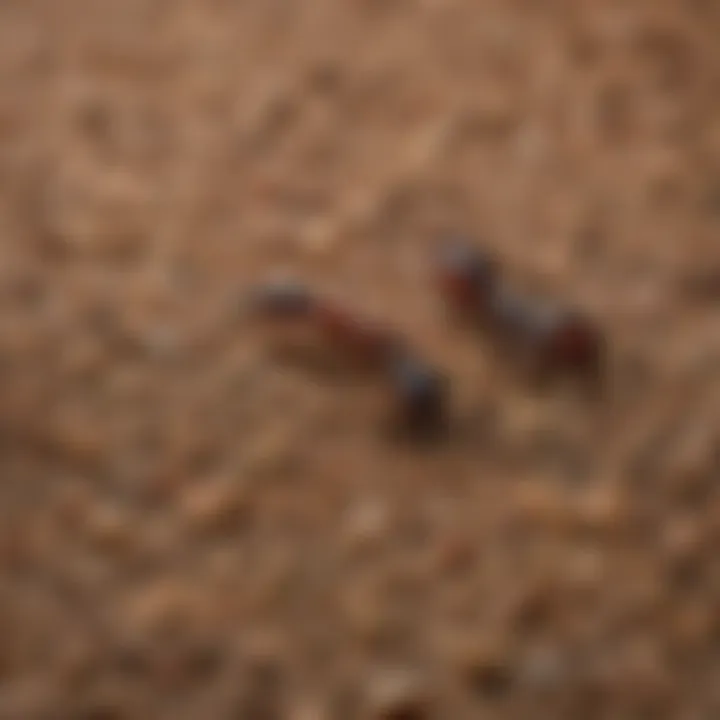
Intro
Ants are often seen as small nuisances, but they can be persistent pests that invade homes and gardens. Understanding how to effectively manage and control ant populations is crucial for maintaining a comfortable living environment. This guide aims to provide a detailed exploration of ant bait strategies, emphasizing their biological behavior, composition of baits, and practical application. By diving into the effectiveness of various bait systems and common pitfalls, this article seeks to equip householders with the knowledge required for efficient pest management.
Understanding Pests
Definition of Pests
Pests are organisms that are considered undesirable due to their negative impact on human activities, health, or the environment. Ants are one of the most common types of pests encountered in residential areas. They can contaminate food, damage structures, and create unsightly nests around homes.
Importance of Pest Identification
Accurate identification of ant species is essential for choosing the right bait and treatment method. Different species exhibit unique behaviors and preferences. For instance, some ants are attracted to sweet substances, while others prefer protein-rich baits. Identifying specific ant types helps in tailoring the bait strategy effectively.
Prevention Techniques
Home and Garden Preventative Measures
Preventative measures play a critical role in managing ant invasions. Here are some effective strategies:
- Seal Entry Points: Check for cracks and crevices around windows and doors. Sealing helps reduce access.
- Remove Food Sources: Keep countertops and floors clean. Ants are drawn to crumbs and spills. Store food in airtight containers.
- Yard Maintenance: Trim vegetation and eliminate standing water. Maintain distance between mulch and home.
Seasonal Prevention Tips
Different seasons may bring unique challenges regarding ant control. In spring, ant colonies expand. During this deluge, the following strategies may be employed:
- Spring Check: Inspect your property for ant activity and address potential issues before they escalate.
- Summer Maintenance: Regularly mow the lawn and keep gardens tidy to deter nesting.
Eco-Friendly Pest Control Solutions
Overview of Sustainable Practices
Environmental awareness is rising. This led to a demand for eco-friendly pest control. Sustainable practices focus on using less toxic materials and methods. Ant baits can be crafted from natural ingredients or designed to be safe for pets and children.
Natural Remedies and Their Effectiveness
Several natural remedies claim effectiveness against ants. Some popular ones involve:
- Vinegar: A mixture of vinegar and water can disrupt ant trails, making it less likely for others to follow.
- Diatomaceous Earth: This natural powder can be spread near entry points. It causes harm to ants who walk over it.
For those who prefer holistic methods, using natural deterrents can offer moderate success in addition to bait systems.
Understanding Ant Behavior
Understanding the behavior of ants is crucial for anyone looking to effectively manage these pests in their environment. Ants are social insects organized into complex colonies, each with specific roles and tasks. They exhibit numerous behaviors related to communication, foraging, and nest building that can influence how ant bait should be deployed. Knowledge of these behaviors not only aids in selecting the correct bait but also enhances the timing and placement strategies.
Social Structure of Ant Colonies
The social structure of ant colonies is foundational to their survival and functions. Each ant colony comprises different castes, including workers, soldiers, and the queen. Workers are responsible for foraging, nest maintenance, and caring for the brood. Soldiers defend the colony, while the queen focuses on reproduction.
This hierarchy means that understanding the specific ant species is key. Different species may have varied social structures, affecting how they interact with your bait. For example, some species may primarily send out scouts to explore food sources. If an ant species has a strong soldier presence, they may aggressively protect their colony from perceived threats, including the introduction of ant bait. This knowledge is essential in determining appropriate strategies.
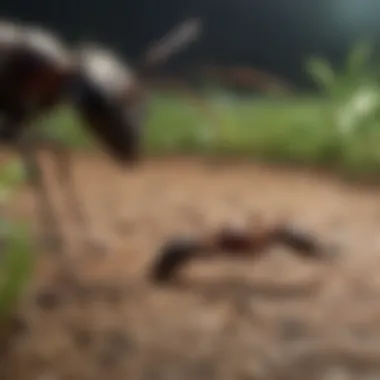
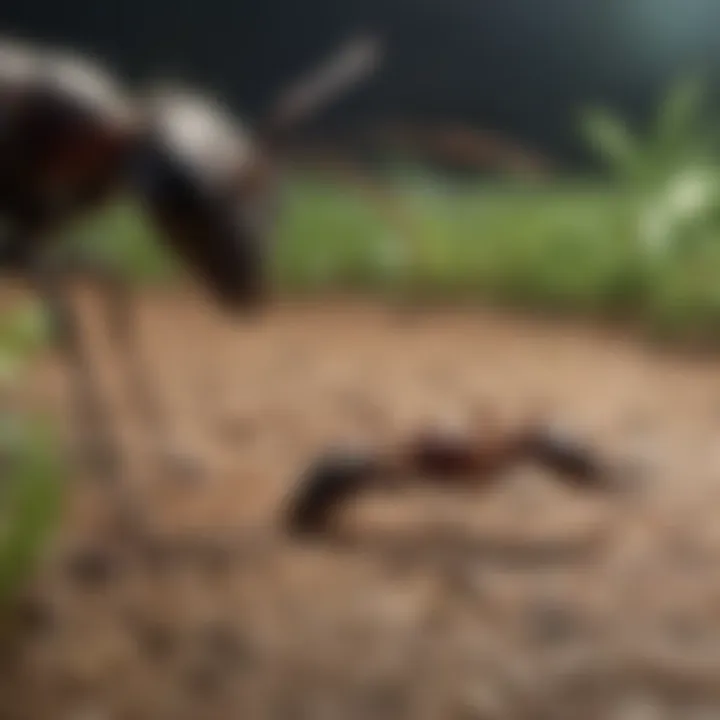
Foraging Patterns
Ants utilize sophisticated foraging patterns based on environmental conditions and colony needs. They often establish pheromone trails to lead other ants to food sources. These trails can guide large numbers of ants to bait stations if positioned effectively. Notably, certain species prefer sugars, while others lean towards proteins in their diet.
Recognizing these patterns can greatly enhance bait effectiveness. Placing bait in areas with high ant activity and along established trails often proves more fruitful. Additionally, understanding seasonal variations in foraging behavior can help in timing bait application, ensuring maximum visibility and attractiveness to ants.
Communication within Colonies
Ants communicate through pheromones, touch, and sound to coordinate tasks within the colony. Pheromones serve multiple functions, from marking trails to signaling danger. This communication network allows colonies to respond quickly to environmental changes.
For baiting strategies, leveraging this communication can yield results. Introducing bait that mimics the scents or tastes they frequently encounter may entice ants. Moreover, ant baits containing specific attractants may stimulate the olfactory senses of ants, drawing greater numbers to the bait, leading to a more substantial impact on the colony.
Understanding ant communication also aids in anticipating their responses to bait, improving strategy effectiveness.
In summary, comprehending ant behavior is invaluable for formulating effective ant bait strategies. The insights into their social structure, foraging habits, and communication methods provide a solid foundation for successful pest management. Selecting the right bait and implementing effective deployment techniques can substantially reduce ant populations in residential settings.
The Science of Ant Bait
Understanding the science of ant bait is crucial for effective pest control. Ant bait is designed to attract ants while delivering a poison that is slow-acting. This allows the worker ants to carry the bait back to the colony, where it is shared with others, including the queen. This method is generally more efficient than simply killing visible ants because it targets the entire colony.
Chemicals and Attractants
Ant baits contain specific chemicals that serve both as attractants and as toxins. These attractants can mimic food sources that ants typically seek. For instance, baits may use sugary substances to draw in ants, particularly those species that prefer sweet diets. Other formulations may include protein-based attractants for species that feed on proteins.
The choice of attractant plays a significant role in effectiveness. Formulations may vary based on the target species. Using a bait that aligns with the ant's natural diet increases the likelihood that it will consume the bait. Furthermore, many commercial baits utilize slow-acting insecticides such as fipronil or hydramethylnon, which are designed to minimize immediate death. This ensures that the bait is carried back to the colony before its effects are fully felt.
Types of Ant Baits
There are several types of ant baits available, each suited to different species of ants and specific situations. Common types include:
- Liquid Baits: These consist of a syrupy liquid that ants can easily consume. They are particularly useful for sweet-eating ants like sugar ants.
- Granular Baits: These are small pellets that can be scattered in areas where ants are active. Granular baits are often used outdoors since they resist moisture and are weatherproof.
- Gel Baits: Gel baits typically come in syringes for easy application. They are effective in targeting house-infesting ants and offer a more controlled placement.
Selecting the right type of bait often depends on observing the species present in your environment and their foraging habits.
How Ants Consume Bait
Ants engage in a process called trophallaxis when consuming bait. This means they share food through mouth-to-mouth feeding. When a worker ant consumes bait, it may then transfer part of it to other ants through this method. This trait is particularly beneficial because it allows the bait to spread throughout the colony effectively.
It is crucial to provide enough bait and strategically place it near ant trails and nesting areas. Ants are more likely to consume bait when it is readily available in their usual foraging paths. The slow-action of the bait’s poison enables the worker ants to return to the colony, where it is distributed and eventually leads to the demise of the queen and other members of the colony.
"Using bait effectively is not about killing ants that are visible. It’s about targeting the entire colony and preventing future invasions."
Understanding these dynamics allows homeowners and housewives to apply ant bait strategies with precision. By using the right chemicals, selecting the appropriate type of bait, and knowing how ants consume it, effective pest management becomes possible.
Selecting the Right Ant Bait
Choosing the right ant bait is crucial for effective pest management. Not all baits work the same way. Different species of ants are attracted to different substances. Knowledgeable selection helps to improve efficacy and minimize waste.
Assessing Ant Species
Identifying the specific ant species invading your space is a necessary first step. Each species has unique feeding preferences, which directly influence bait choice. For instance, sugar ants are primarily attracted to sweet substances, while grease ants prefer protein-based offerings. You can observe their foraging patterns to determine species and preferences. This knowledge arms you to select a bait type that aligns with their natural diet. Moreover, some ants have a tendency to preferentially return to familiar food sources. Therefore, observing their behavior provides valuable insight.
Environmental Considerations
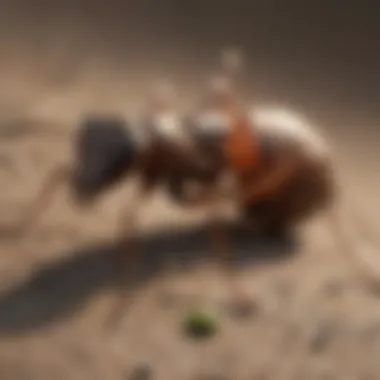
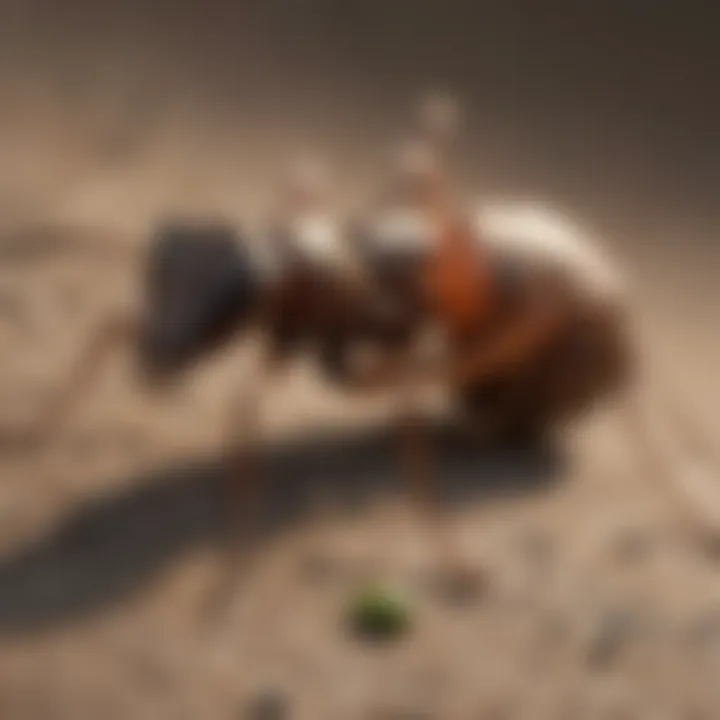
The surrounding environment can greatly impact how effective ant bait will be. Consider factors such as temperature, moisture, and surrounding food sources when choosing bait. For example, high moisture can cause certain baits to degrade quicker, limiting their effectiveness. Ensure that the bait is suitable for your specific environment. This includes choosing placements that are away from direct sunlight and moisture-prone areas. It is also wise to evaluate any environmental hazards. Protection of beneficial insects and local wildlife should be taken into account. If you live near sensitive areas, opting for eco-friendly baits may prevent unintended consequences.
Consumer Preferences
Understanding consumer preferences is also important. Many homeowners may favor products that are easy-to-use and have low odor. Baits that require minimal involvement, such as ready-to-use gels or stations, may be more appealing to busy households. Price points also vary. It is important to compare products not just based on cost, but effectiveness as well. Look for products with positive reviews and successful outcomes. Choosing a product that aligns with your needs and lifestyle will ultimately promote more consistent results.
Tip: Always read product labels for specific instructions and precautions. This ensures safe and effective usage of ant baits.
Effective Baiting Strategies
Effective baiting strategies are essential in managing ant infestations. Understanding how to use bait appropriately can lead to quicker results and a more efficient pest control process. These strategies involve knowing where to place bait, when to apply it, and how to monitor ant activity. Each aspect plays a significant role in maximizing bait efficacy and minimizing waste.
Placement of Bait Stations
The placement of bait stations is crucial for the success of ant control efforts. You need to identify high-traffic areas where ants are most frequently seen. Common spots include kitchens, near entry points, and along baseboards. Proper placement increases the chances that ants will come into contact with the bait.
When deploying bait stations, consider the following tips:
- Direct Paths: Place baits along the trails ants typically use. This invites more ants to feed on the bait.
- Avoid Disturbance: Do not place bait in areas that are frequently disturbed. This can deter ants from visiting.
- Accessibility: Ensure the bait is accessible to ants while keeping it out of reach of children or pets.
Effective placement is an art and should be tailored to your specific home environment.
Timing of Bait Application
Timing is another factor that should not be overlooked. Ants have specific patterns of activity depending on the species and the environment. Understanding these patterns will help you to apply bait when ants are most active.
- Early Morning and Late Afternoon: Many ant species forage during these times. Applying bait at these hours may yield the best results.
- After Rain: Ants are more likely to come to the surface after rainfall, making this an ideal time to apply bait.
You should also consider the weather conditions when using bait. Extreme heat can deter ants from showing up to bait stations. Implementing baits when conditions are favorable will increase your chances of success.
Monitoring Ant Activity
Monitoring ant activity is vital for assessing the effectiveness of your bait strategies. Observing ant behavior can help determine whether to adjust or relocate bait stations.
When monitoring, keep an eye out for:
- Changes in Ant Numbers: If you notice a significant reduction in ant activity, it may indicate that the bait is effective.
- New Trails: If ants start forming new trails, this might mean they are finding new food sources or moving to different areas.
- Species Identification: Different species of ants respond differently to baits. Identifying the species can help in fine-tuning your approach.
By closely monitoring ant activity, you can make informed decisions about when and where to adjust your baiting strategy.
"Effective strategy requires precision in placement, timing, and monitoring to deal with ant infestations efficiently."
In summary, employing effective baiting strategies entails careful consideration of placement, timing, and monitoring. By understanding the characteristics of the ants you are dealing with, you take major steps toward successful pest management.
Common Mistakes in Ant Bait Usage
Using ant bait effectively requires careful consideration. Common mistakes can reduce the effectiveness of the bait and complicate pest management efforts. Identifying and avoiding these pitfalls is crucial for homeowners seeking more successful outcomes in ant control. An understanding of these common errors will lead to a more efficient use of baiting strategies.
Misidentifying Pests
A foundational mistake is misidentifying the pests involved. Ant species exhibit different behaviors and bait preferences. Using the wrong bait for a specific species often leads to failure. For instance, sugar-based baits might attract sweet-toothed species like Carpenter ants, but may not be effective for grease-loving types such as Odorous house ants. Familiarity with the types of ants in the area is essential before selecting bait. Conduct research or consult local pest control guides. Without proper identification, any bait strategy is likely to fall short.
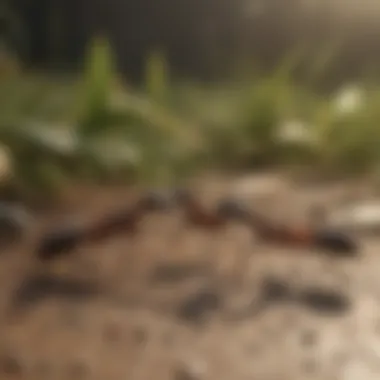

Overusing Baits
More is not always better when it comes to ant baits. Overusing bait stations can confuse ants and lead to bait aversion. If ants encounter overwhelming amounts of an unfamiliar substance, they may avoid it altogether. This can hinder the effectiveness of the bait. Additionally, many baits contain harmful chemicals. Excessive use raises concerns for pets and children. It is wise to follow the manufacturer’s recommendations on the frequency and quantity of bait application. Less frequent, targeted baiting can yield better results.
Ignoring Safety Protocols
Safety should not be an afterthought in pest management. Ignoring safety protocols can lead to unintended consequences, including harm to non-target species or human health. Always read product labels carefully. Some baits contain toxic substances that can pose risks to pets or children. Ensure bait stations are placed out of reach and monitor regularly. Implement best practices, like using eco-friendly options when possible. By respecting safety guidelines, one ensures a more responsible approach to baiting.
Environmental Impact of Ant Bait
Understanding the environmental impact of ant bait is essential for homeowners and pest management professionals alike. While effective in controlling ant populations, the selected bait can influence larger ecological systems. It is crucial to evaluate the chemicals used in ant baits, their potential effects on non-target species, and the overall health of local ecosystems. Homeowners must grow aware of the implications their pest control choices can have on the environment.
Considerations for Eco-Friendly Solutions
When selecting ant bait, consider eco-friendly options. Many traditional baits contain harsh chemicals. These can not only harm the targeted ant species but also adversely affect beneficial insects such as bees and butterflies. Furthermore, such chemicals may seep into the soil and water supply. Thus, look for ant baits that rely on natural attractants like boric acid or diatomaceous earth.
Eco-friendly solutions are not just about lessening harm but also about sustainability and safety. Products labeled as safe for pets and children can help householders feel secure when using them.
Long-Term Effects on Ecosystems
The long-term effects of ant bait on ecosystems can be significant. Ants play vital roles in their environments. They aid in soil aeration and seed dispersion, among other functions. The removal of extensive ant colonies through bait can disrupt local ecosystems. For instance, some animal species rely on ants as a food source. Severing these connections can lead to unforeseen consequences.
Beyond immediate impact, there is a concern about the residue left in the environment. Continuous usage of chemical baits can result in bioaccumulation, affecting not only the ants but also other local wildlife. Hence, long-term ecological assessments and careful monitoring should follow any bait application.
Regulations and Guidelines
Regulations surrounding pest control products vary by region. Homeowners must educate themselves about these local guidelines to ensure compliance and environmental responsibility. In many areas, there are specific rules regarding the use of certain chemicals in residential settings. This can include restrictions on the types of baits that can be used in proximity to water bodies or sensitive habitats.
Moreover, understanding labels is crucial. The Environmental Protection Agency (EPA) provides guidelines on acceptable use levels and application methods. By adhering to these regulations, homeowners not only ensure their safety but also protect the broader environment from potential hazards associated with improper bait application.
"Awareness and education about the environmental effects of pest control strategies are vital for sustainable practice."
Ultimately, choosing ant bait with consideration for its environmental impact can substantially affect local biology and ecology. A shift toward responsible baiting techniques fosters safer and healthier environments.
Epilogues on Ant Baiting Practices
The topic of ant baiting practices is significant in the realm of effective pest management. With an understanding of ant behavior and bait chemistry, homeowners can tailor their strategies to provide optimal results. It is crucial to evaluate the effectiveness of different types of baits. A proper assessment ensures that the most suitable options are chosen based on the specific ant species and infestation level.
When considering ant baits, one must not overlook the environmental implications. Integrating eco-friendly practices into pest control not only helps in maintaining ecological balance but also secures the health of nearby inhabitants, including pets and children. This means that when selecting a bait, it is wise to become familiar with the ingredients and their potential impact on the environment. Bait vendors usually provide information regarding any associated risks, but some analysis can reveal more about environmental safety.
Another essential consideration is the ongoing developments in pest control technology. Research is continually unveiling more sophisticated bait formulations, making it vital that consumers stay updated. There are promising breakthroughs that aim to enhance efficacy without compromising safety. Following industry advancements can help homeowners adapt to more sustainable and effective ant control methods, ensuring that they are not relying solely on outdated techniques.
"Being informed on best practices and advancements ensures optimal pest management and environmental safety."
Evaluating Bait Effectiveness
Evaluating bait effectiveness involves examining several key factors. The first is the level of ant activity. Homeowners should monitor bait stations over time to see if there is a noticeable decline in ant populations. This can be done by checking the frequency and quantity of ants visiting the bait sites. If ants respond positively and show affinity for the bait, it usually indicates effectiveness.
In addition, timing plays a critical role. For certain ant species, bait consumption peaks at specific times during the day. Observing patterns can aid in determining when to reapply bait or alter its position.
Moreover, a systematic approach to testing different baits can yield valuable insights. Homeowners may choose to conduct small trials with various brands or types and record which yields the best results. This step is vital because not all ant baits work equally well on every species.
Future Developments in Pest Control
Future developments in pest control are focusing on both innovation and sustainability. Researchers are investigating new compounds that target ant physiology directly, potentially leading to more efficient and less toxic solutions. For example, studies are examining the use of naturally derived substances that are less harmful to non-target species.
Furthermore, advancements in technology may enhance baiting systems. Electronic monitoring tools could allow for real-time tracking of ant activity, optimizing placement and timing. Such innovations could result in smarter pest management solutions that reduce the need for repetitive applications.
Overall, staying informed on future developments is essential for homeowners seeking effective ant control. With ongoing research, the methods used to combat ant problems are evolving, providing opportunities for improved results.



